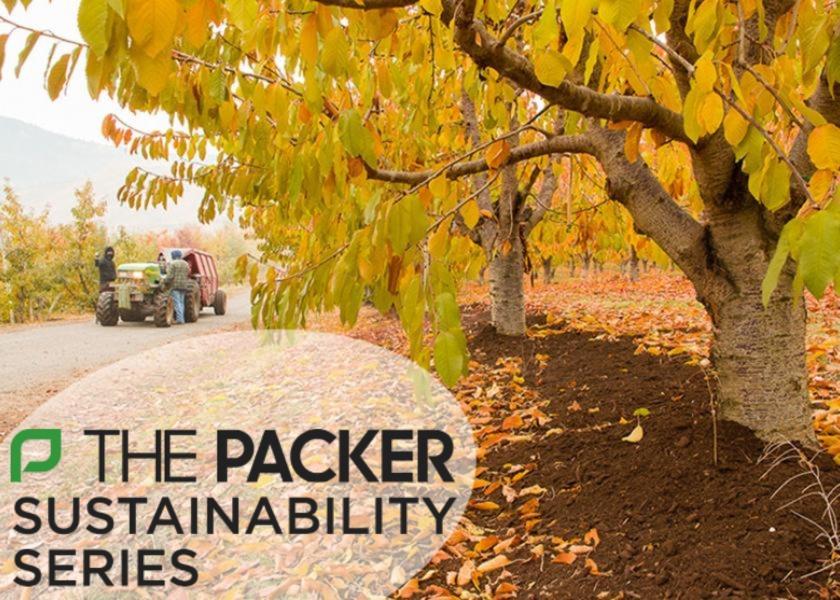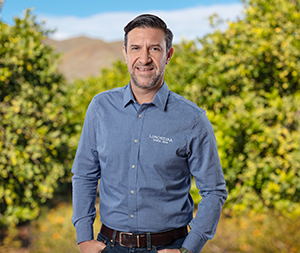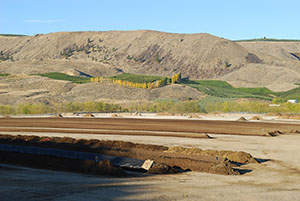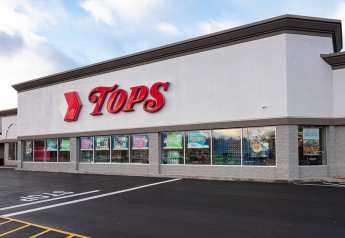Growers keep their eye on the ball, pioneering conservation solutions rooted in soil

Growers, retailers and consumers who experience whiplash trying to follow sustainability trends are not alone. Keeping up with the fast-clip change in sustainability movements —think climate-smart, no-till, conservation ag, organic, clean, ethically sourced, regenerative and the list goes on — can leave even the nimble a little breathless.
Despite such quick-moving advances in an evolving field, consumers and the fresh produce industry can agree that sustainability — however it’s defined — is critical. What’s more, according to The Packer’s 2022 Sustainability Insights Survey, close to 70% of consumers identified climate change as extremely or very important to their overall sustainability priorities.
A quarter of all global greenhouse gas emissions come from growing food, according to the United Nations Intergovernmental Panel on Climate Change. The challenge is figuring out how to reduce greenhouse gas emissions, instead of increasing them. At the same time, the warming climate is already making it harder to grow food in some areas in the U.S.
Resourceful and creative, the fresh produce industry is tackling these challenges head on. Many producers are actively improving sustainability in their supply chains, focusing on priorities such as:
- Improving soil health;
- Emphasizing integrated pest management;
- Conserving water;
- Adopting packaging innovations;
- Reducing food waste; and
- Improving supply chain traceability.
In this four-part series, The Packer shares ways producers across the fresh produce supply chain are hard at work, pioneering ways to grow, harvest and package fruits and vegetables while reducing their carbon footprint.
Sustainability starts with soil health
The foundation of sustainable agriculture is rooted in soil. According to the USDA Natural Resources Conservation Service, 95% of all food can be traced back to dirt. Healthy topsoil feeds healthy plants. But that’s not all. According to the NCRS, every 1% increase in organic matter results in as much as an additional 25,000 gallons of soil water available per acre.
What’s more, the soil microbiome is teeming with life. Soil is comprised of a rich slurry that’s 25% water, 45% minerals, 5% organic matter and 25% air. Living in the soil are plant roots, bacteria, algae, fungi, protozoa and small creatures like nematodes, worms, ants, maggots, grubs and other insects.
 When it comes to building soil health, Edgar Gutierrez, vice president of farming operations at Limoneira, is quick to note that building rich, moisture-absorbing soil takes time. “You can’t quantify impact quickly when you’re talking about organic matter. It takes years.”
When it comes to building soil health, Edgar Gutierrez, vice president of farming operations at Limoneira, is quick to note that building rich, moisture-absorbing soil takes time. “You can’t quantify impact quickly when you’re talking about organic matter. It takes years.”
Gutierrez knows firsthand. He joined Limoneira four years ago from Wonderful Citrus and is exploring ways to enhance soil water retention in the desert sands in the Mojave Desert. Gutierrez and his team are experimenting with incorporating mulch and compost into sandy desert silt and investigating the potential of liquid nanoplates to increase water retention in the desert sand. The project is in its third year. “It’s small scale right now,” said Gutierrez, “but it’s something very promising for the near future.”
Chelsea Consalo, executive vice president of New Jersey-based Consalo Family Farms, agrees that mulch enhances soil moisture retention. Consalo cites mulches as useful to increase water absorption, add organic matter, regulate soil temperature and prevent erosion.
Other growers, such as Stemilt, focus on compost. “Fourth-generation cherry grower Kyle Mathison is the man behind [our] world-famous compost,” said Brianna Shales, marketing director at Stemilt. “He has a multi-acre site that takes in green waste from Stemilt’s packing facilities, community yard waste from green waste collection containers and other organic materials. They have a recipe for making compost and utilize it as fertilizer on trees through two applications per year. Kyle really feels that using his custom compost helps produce fruits with more complex flavors.”
 Mathison’s compost is applied to approximately 1500 acres of orchards. After the compost is applied, Stemilt relies on close soil moisture monitoring to “determine nutrient needs for specific orchard locations and the varieties that are growing on them.”
Mathison’s compost is applied to approximately 1500 acres of orchards. After the compost is applied, Stemilt relies on close soil moisture monitoring to “determine nutrient needs for specific orchard locations and the varieties that are growing on them.”
According to Shales, excellent compost is crucial to the quality of Stemilt’s stone fruit. “Our focus is always on flavor and quality, so there is a lot of work that goes into ensuring we are getting the right balance of nutrients in the soil to help us do that.”
While growers are laser-focused on building soil health from the ground up in fields and orchards, chemical companies build soil and plant health from inside a lab.
At biopesticide company BioSafe Systems, experts focus on chemical solutions to solve problems at their root. “The more we learn about the soil microbiome and its intricacies, and the impact on plant health, a different level of care will result from the desire to utilize products to reduce plant pathogens without eradicating beneficial organisms,” said Ray Austin, soil specialist at BioSafe Systems.
“We saw a problem arise when the [Environmental Protection Agency] removed conventional chemistries for soil treatment like methylbromide from the market, which limited reliable options for growers,” said Austin. “The remaining chemistries included limitations like run-off, drift, plant back restrictions and buffering zones that complicate product use and increase environmental and worker safety concerns. In response, BioSafe Systems built out a program using our product base to solve those problems and meet those needs. Our chemistry doesn’t have the limitations and contributes positively to soil vitality.”







